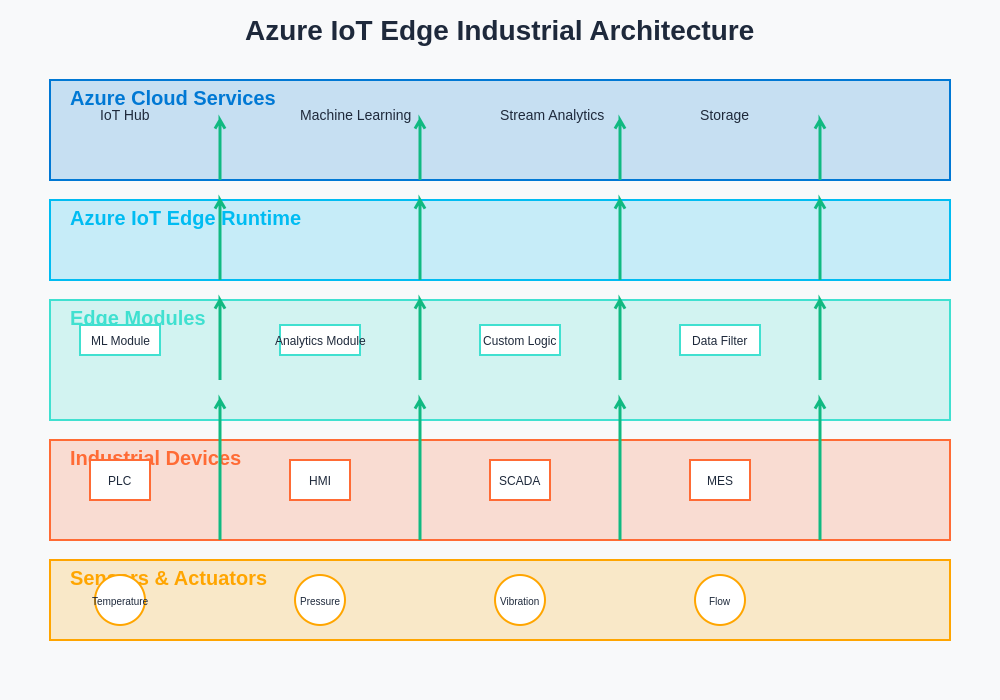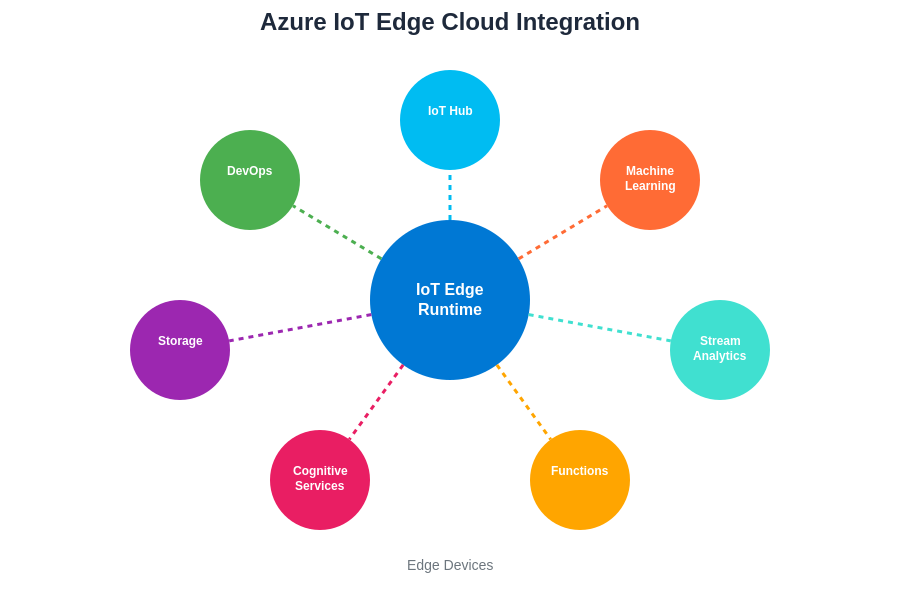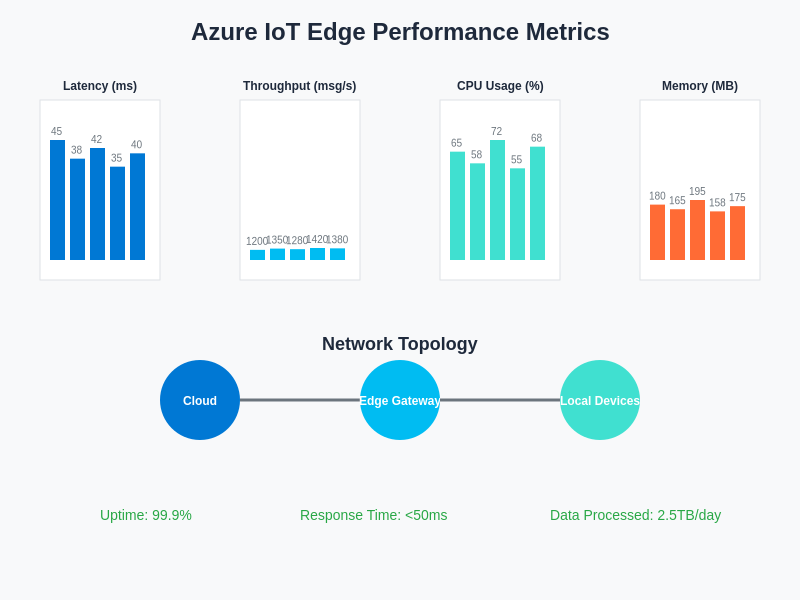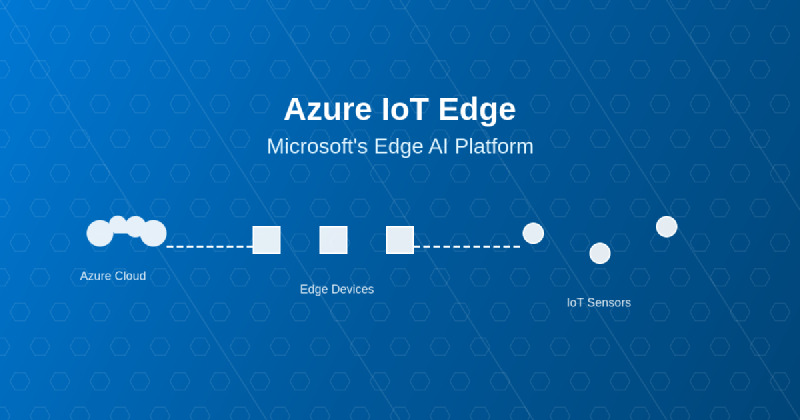The emergence of edge computing has fundamentally transformed how organizations approach Internet of Things deployments, moving computational power closer to data sources to enable real-time processing and reduce latency. Microsoft’s Azure IoT Edge represents a pioneering solution in this evolving landscape, delivering cloud intelligence directly to edge devices while maintaining seamless integration with Azure’s comprehensive cloud ecosystem. This revolutionary platform bridges the gap between traditional cloud computing and the demanding requirements of modern IoT applications, enabling organizations to deploy sophisticated artificial intelligence and machine learning capabilities at the network edge.
Explore the latest IoT and edge computing trends to understand how edge AI is revolutionizing industries from manufacturing to healthcare. Azure IoT Edge stands as a testament to Microsoft’s commitment to democratizing edge computing, providing enterprises with the tools necessary to harness the full potential of distributed intelligence while maintaining enterprise-grade security and manageability.
Understanding Azure IoT Edge Architecture
Azure IoT Edge represents a sophisticated runtime environment that extends Azure cloud services to edge devices, creating a hybrid computing model that combines the best aspects of cloud and edge processing. The platform’s architecture is built around a modular container-based system that allows organizations to deploy custom business logic, Azure services, and third-party services directly to IoT devices. This architectural approach ensures that edge devices can operate independently while maintaining connectivity to the cloud for synchronization, management, and enhanced processing capabilities.
The core components of Azure IoT Edge include the IoT Edge runtime, which manages and communicates with modules deployed on edge devices, the IoT Edge hub that handles message routing and communication, and the IoT Edge agent that manages module lifecycle and reporting. This distributed architecture enables organizations to create sophisticated edge computing solutions that can process data locally, make real-time decisions, and synchronize with cloud services when connectivity is available. The platform’s ability to operate in disconnected scenarios while maintaining data integrity and security makes it particularly valuable for industrial applications and remote deployments.
Edge AI Capabilities and Machine Learning Integration
One of the most compelling aspects of Azure IoT Edge lies in its seamless integration with Azure’s machine learning and artificial intelligence services, enabling organizations to deploy sophisticated AI models directly to edge devices. The platform supports various machine learning frameworks including TensorFlow, PyTorch, and ONNX, allowing data scientists and developers to leverage their existing expertise while extending AI capabilities to the edge. This integration enables real-time inference, anomaly detection, and predictive analytics without requiring constant cloud connectivity.
The edge AI capabilities extend beyond simple model deployment to include comprehensive model management, versioning, and updates through Azure Machine Learning integration. Organizations can train models in the cloud using Azure’s powerful computing resources and then deploy them to edge devices for real-time inference, creating a seamless workflow that bridges cloud-scale training with edge-scale deployment. This approach significantly reduces latency for time-sensitive applications while minimizing bandwidth requirements and ensuring that critical decisions can be made locally even during network outages.
Experience advanced AI capabilities with Claude for developing sophisticated edge AI solutions that integrate seamlessly with Azure IoT Edge deployments. The combination of cloud-trained models and edge deployment creates powerful hybrid intelligence systems that maximize both performance and reliability.
Industrial IoT and Manufacturing Applications
Azure IoT Edge has found particularly strong adoption in industrial and manufacturing environments where real-time processing, reliability, and security are paramount. The platform’s ability to process sensor data locally enables immediate responses to critical conditions such as equipment failures, quality deviations, or safety hazards without depending on cloud connectivity. This capability is essential for modern manufacturing operations that require sub-second response times and cannot tolerate the latency associated with cloud-based processing.
The industrial applications of Azure IoT Edge extend beyond simple monitoring to include predictive maintenance, quality control, and process optimization. Manufacturing organizations can deploy computer vision models for automated quality inspection, machine learning algorithms for predictive maintenance, and analytics engines for real-time process optimization. The platform’s integration with industrial protocols and standards ensures compatibility with existing manufacturing systems while providing a pathway for digital transformation and Industry 4.0 initiatives.

The industrial deployment architecture demonstrates how Azure IoT Edge seamlessly integrates with existing manufacturing infrastructure, providing a bridge between operational technology and information technology systems. This integration enables comprehensive digital transformation while maintaining the reliability and security standards required for industrial operations.
Security and Compliance Framework
Security represents a foundational element of Azure IoT Edge, with Microsoft implementing comprehensive security measures that address the unique challenges of edge computing environments. The platform incorporates hardware-based root of trust, secure boot processes, and encrypted communications to ensure that edge devices remain secure even in potentially hostile environments. The security framework extends from device identity and authentication through data encryption and secure module deployment.
The compliance capabilities of Azure IoT Edge align with major industry standards and regulations including ISO 27001, SOC 2, and GDPR, enabling organizations to deploy edge computing solutions in highly regulated industries such as healthcare, finance, and government. The platform’s security features include certificate-based authentication, role-based access control, and comprehensive audit logging that provides visibility into all edge operations. This security-first approach ensures that organizations can confidently deploy edge computing solutions without compromising their security posture or regulatory compliance requirements.
Device Management and Monitoring
Azure IoT Edge provides comprehensive device management capabilities that enable organizations to monitor, configure, and update edge devices at scale across distributed deployments. The platform’s integration with Azure IoT Hub provides centralized device management while maintaining the flexibility to operate autonomously when cloud connectivity is unavailable. This hybrid approach ensures that organizations can maintain operational visibility and control while benefiting from the resilience of edge computing.
The monitoring and telemetry capabilities of Azure IoT Edge provide detailed insights into device performance, module health, and system metrics that enable proactive maintenance and optimization. Organizations can establish automated alerting, performance baselines, and diagnostic capabilities that ensure edge deployments remain operational and performant. The platform’s ability to collect and aggregate telemetry data across distributed edge devices provides valuable insights for optimizing deployments and improving overall system reliability.
Leverage Perplexity’s research capabilities to stay informed about the latest developments in IoT device management and edge computing best practices. The rapid evolution of edge computing technologies requires continuous learning and adaptation to maximize the value of edge deployments.
Development and Deployment Workflow
The development experience for Azure IoT Edge is designed to accommodate both traditional IT developers and operational technology professionals, providing multiple pathways for creating and deploying edge solutions. The platform supports containerized module development using familiar tools and frameworks while providing specialized IoT Edge extensions for Visual Studio Code that streamline the development process. This approach ensures that organizations can leverage existing development expertise while adopting edge computing capabilities.
The deployment workflow for Azure IoT Edge emphasizes automation and repeatability, enabling organizations to deploy complex edge solutions across hundreds or thousands of devices with confidence. The platform’s support for infrastructure as code, automated testing, and staged deployments ensures that edge solutions can be deployed reliably and consistently. The integration with Azure DevOps and GitHub Actions provides comprehensive CI/CD capabilities that extend traditional software development practices to edge computing environments.
Integration with Azure Cloud Services
Azure IoT Edge’s seamless integration with the broader Azure ecosystem represents one of its most significant advantages, enabling organizations to leverage the full spectrum of Azure services at the edge. The platform provides native integration with Azure services including Azure Functions, Azure Stream Analytics, Azure Machine Learning, and Azure Cognitive Services, allowing organizations to deploy sophisticated cloud-native capabilities directly to edge devices.
This integration extends beyond simple service deployment to include data synchronization, hybrid analytics, and coordinated processing between edge and cloud environments. Organizations can implement sophisticated architectures where initial processing occurs at the edge with more complex analytics and long-term storage handled in the cloud. This hybrid approach optimizes both performance and cost while ensuring that organizations can leverage the full capabilities of both edge and cloud computing.

The comprehensive integration architecture illustrates how Azure IoT Edge creates seamless connectivity between edge devices and cloud services, enabling sophisticated hybrid computing scenarios that optimize both performance and functionality. This integration approach ensures that organizations can leverage existing Azure investments while extending capabilities to edge environments.
Real-Time Analytics and Data Processing
Azure IoT Edge excels in scenarios requiring real-time data processing and analytics, providing the computational capabilities necessary to analyze streaming data and make immediate decisions based on complex business logic. The platform’s support for Azure Stream Analytics at the edge enables organizations to implement sophisticated event processing, aggregation, and alerting capabilities directly on edge devices. This real-time processing capability is essential for applications requiring immediate responses to changing conditions.
The data processing capabilities extend beyond simple analytics to include complex event processing, machine learning inference, and integration with external systems and databases. Organizations can implement sophisticated data pipelines that process, transform, and route data based on business rules and machine learning models. The platform’s ability to handle high-volume data streams while maintaining low latency makes it ideal for applications such as fraud detection, quality control, and safety monitoring.
Scalability and Performance Optimization
The scalability characteristics of Azure IoT Edge enable organizations to deploy solutions ranging from single-device prototypes to enterprise-scale deployments spanning thousands of edge devices across multiple geographic locations. The platform’s containerized architecture ensures that solutions can scale efficiently while maintaining consistency and reliability across diverse deployment environments. This scalability extends to both horizontal scaling across multiple devices and vertical scaling within individual devices.
Performance optimization in Azure IoT Edge involves careful consideration of resource allocation, module placement, and data flow optimization to ensure that edge devices operate efficiently within their hardware constraints. The platform provides comprehensive monitoring and optimization tools that enable organizations to identify performance bottlenecks and optimize deployments for maximum efficiency. The ability to implement intelligent data filtering and aggregation at the edge significantly reduces bandwidth requirements while improving overall system performance.
Cost Optimization and Resource Management
Azure IoT Edge enables significant cost optimization opportunities by reducing bandwidth requirements, minimizing cloud computing costs, and optimizing resource utilization across edge deployments. The platform’s ability to process data locally reduces the volume of data transmitted to the cloud, resulting in substantial savings on bandwidth and cloud processing costs. This cost optimization is particularly significant for deployments involving large numbers of sensors or high-frequency data collection.
The resource management capabilities of Azure IoT Edge enable organizations to optimize hardware utilization and extend device lifecycles through efficient resource allocation and workload distribution. The platform’s support for multiple workloads on shared hardware enables organizations to maximize their infrastructure investments while maintaining isolation and security between different applications and tenants.

The performance metrics dashboard demonstrates the comprehensive monitoring and optimization capabilities available through Azure IoT Edge, enabling organizations to maintain optimal performance while minimizing costs and resource consumption. These metrics provide the insights necessary for data-driven optimization of edge deployments.
Future Developments and Roadmap
The future evolution of Azure IoT Edge reflects Microsoft’s continued investment in edge computing and artificial intelligence, with planned enhancements focusing on improved AI capabilities, enhanced security features, and expanded integration with emerging technologies. The platform’s roadmap includes support for advanced AI frameworks, improved developer tools, and enhanced integration with Azure’s expanding portfolio of cognitive services and machine learning capabilities.
Emerging capabilities include support for federated learning, which enables machine learning models to be trained across distributed edge devices while maintaining data privacy and security. The platform’s evolution toward more autonomous edge computing capabilities includes enhanced offline operation, improved local decision-making, and more sophisticated edge-to-edge communication and coordination capabilities.
The integration of Azure IoT Edge with emerging technologies such as 5G networks, augmented reality, and advanced robotics represents significant opportunities for creating innovative edge computing solutions that were previously impractical or impossible. These technological convergences will enable new categories of applications and use cases that leverage the unique capabilities of edge computing combined with cutting-edge technologies.
Best Practices and Implementation Guidelines
Successful implementation of Azure IoT Edge requires careful consideration of architecture design, security configuration, and operational procedures that ensure reliable and secure edge computing deployments. Best practices include implementing comprehensive device identity management, establishing secure communication protocols, and designing resilient architectures that can operate effectively in both connected and disconnected scenarios.
The implementation guidelines emphasize the importance of thorough testing and validation procedures that ensure edge solutions operate reliably under various conditions including network outages, hardware failures, and security threats. Organizations should establish comprehensive monitoring and alerting systems that provide visibility into edge operations while implementing automated recovery procedures that minimize downtime and maintain operational continuity.
Successful Azure IoT Edge deployments also require careful consideration of change management and organizational readiness, ensuring that teams have the necessary skills and processes to effectively manage edge computing environments. This includes training on edge computing concepts, development tools, and operational procedures that ensure long-term success and value realization from edge computing investments.
Azure IoT Edge represents a transformative platform that enables organizations to harness the power of edge computing while maintaining seamless integration with cloud services and enterprise systems. The platform’s comprehensive capabilities, robust security framework, and extensive integration options make it an ideal choice for organizations seeking to implement sophisticated edge computing solutions that deliver real-time insights and autonomous decision-making capabilities.
Disclaimer
This article is for informational purposes only and does not constitute professional advice. The information presented is based on publicly available documentation and general understanding of Azure IoT Edge capabilities. Organizations should conduct thorough evaluation and testing before implementing edge computing solutions. Microsoft Azure services and features may change over time, and readers should consult official Microsoft documentation for the most current information. Implementation requirements and results may vary based on specific use cases, hardware configurations, and organizational requirements.
